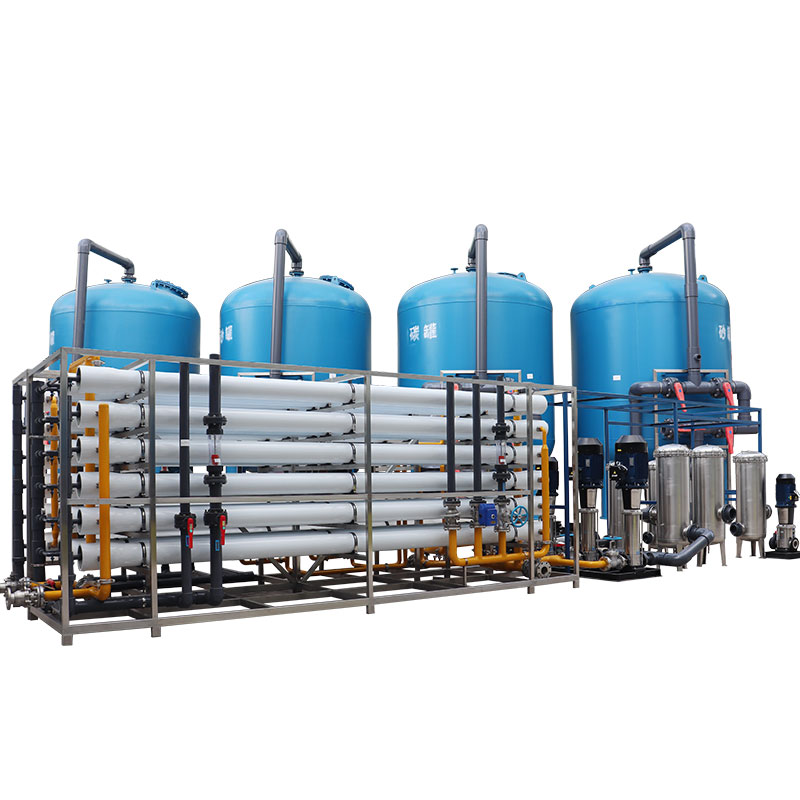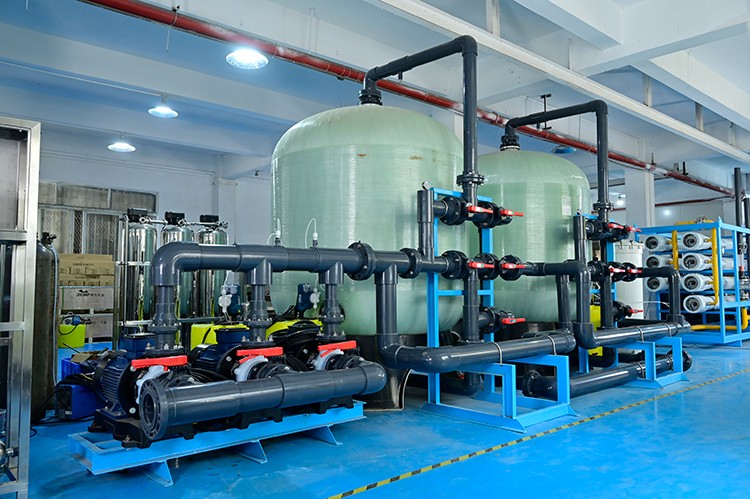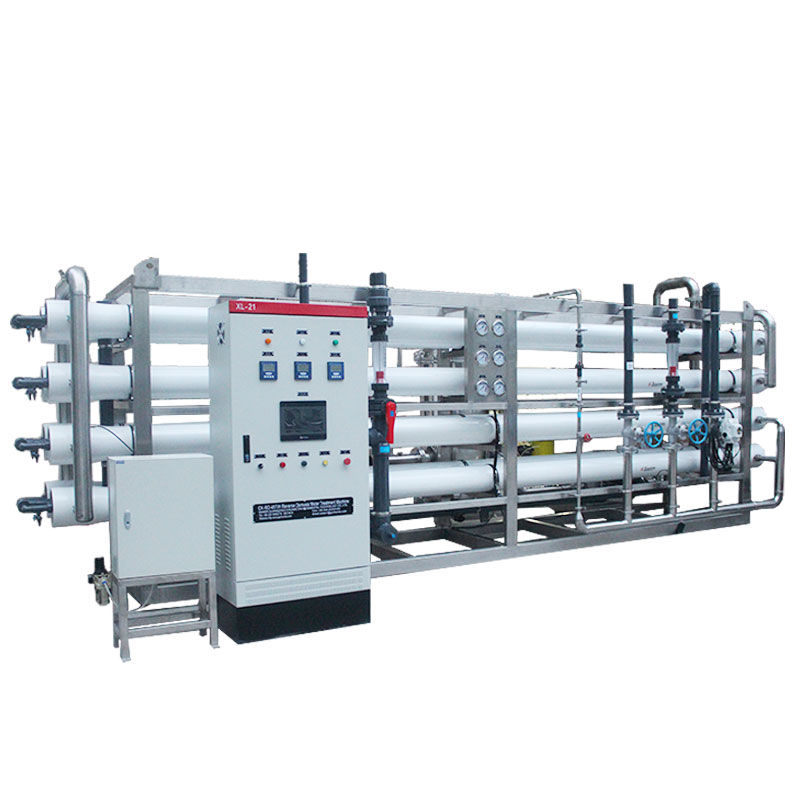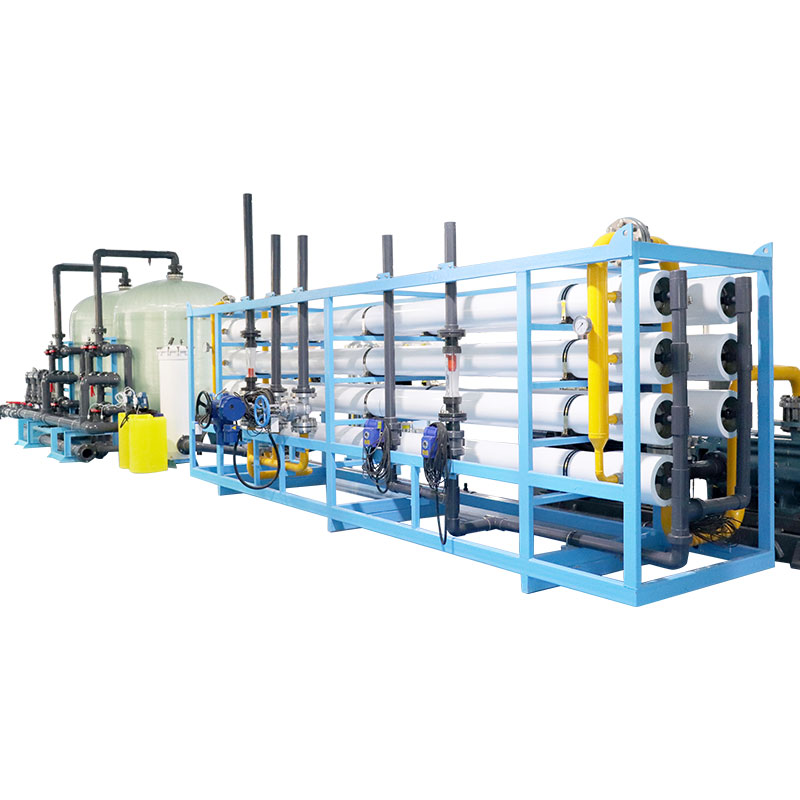Which industries need a 50,000 L/h Reverse osmosis system?
Reverse osmosis (RO) systems are a highly efficient water treatment technology used in a wide range of industries. For some high-volume industries such as food and beverage manufacturing, chemical processing, and power plants, a 50,000 L/h (50 m3/h) RO system is essential. Such systems are able to process large volumes of water and provide consistent, pure water quality to meet the needs of large-scale production and operations.
However, does a RO system with such high processing capacity require high maintenance costs? This article will explore these questions in depth.

Which industries need a 50,000 L/h RO system?
Food and Beverage Manufacturing - The food and beverage manufacturing industry is one of the industries with extremely strict requirements for water quality. Whether it is used for beverage production, food processing, or cleaning and disinfection, the purity of water directly affects the quality and safety of the product. Large-scale production lines need to process large amounts of water every day, so the food and beverage industry often requires large-capacity RO systems to ensure production continuity. In this industry, 50,000 liters/hour reverse osmosis systems are often used for pre-treatment of drinking water, purification of process water, and final treatment of products. For example, bottled water plants, breweries, and dairy production lines all rely on such high-capacity reverse osmosis systems to ensure that products meet hygiene standards and meet consumer demand.
Power plants - Power plants, especially thermal and nuclear power plants, require large amounts of water for cooling and steam production. To avoid scale formation and corrosion, power plants need to use high-purity water. Therefore, reverse osmosis systems are widely used in power plants. The treatment capacity of 50,000 liters per hour is a moderate size for large power plants, which can provide a continuous supply of pure water to boilers, ensuring power generation efficiency and long-term stable operation of equipment.
Chemical industry - The chemical industry has equally stringent requirements for water quality. Many chemical processes require ultrapure water to prevent impurities from interfering with chemical reactions or to avoid equipment corrosion. The 50,000 liters/hour reverse osmosis system can meet the needs of chemical companies for large-scale water treatment and ensure stable water quality during the production process. Chemical plants often use reverse osmosis water to prepare process water, cooling water, and rinse water for final products. In some cases, these systems are also used in conjunction with other treatment units such as degassing towers and mixed bed resins to further improve the purity of the water.
Pharmaceutical Industry - The pharmaceutical industry has one of the highest water quality requirements. Water for injection, purified water, and process water must meet sterile and impurity-free standards to avoid contamination and product quality issues. Reverse osmosis systems are widely used in the pharmaceutical industry, especially in the production of pharmaceuticals where large amounts of pure water are required. A processing capacity of 50,000 liters/hour is sufficient to support the daily operations of large-scale pharmaceutical plants.

Is the maintenance cost of a 50,000 liter/hour reverse osmosis system high?
Initial investment and equipment complexity
The initial investment of a reverse osmosis system usually includes equipment cost, installation cost, and commissioning cost. For a 50,000 liter/hour system, the complexity and size of the equipment determine its higher initial investment. These systems usually contain multiple membrane modules, high-pressure pumps, pretreatment devices (such as sand filters, activated carbon filters, etc.), and automated control systems.
Due to the high complexity of the equipment, regular maintenance and monitoring of the system is particularly important, and dedicated technicians must be responsible for daily operation and maintenance. Therefore, although the initial investment is large, the maintenance cost is closely related to the complexity of the equipment and the frequency of use.
Membrane replacement cost
The core component of the reverse osmosis system is the reverse osmosis membrane. The life of the reverse osmosis membrane is usually 2-3 years, but this depends on the quality of the influent water and the operating conditions of the system. For a 50,000 liter/hour system, the number of membrane components and the replacement cost are considerable. In general, the replacement cost of the membrane is an important part of the operating cost of the reverse osmosis system.
The price of membranes varies from manufacturer to manufacturer, and with the development of technology, the durability and anti-fouling performance of membranes are constantly improving, which may also reduce the long-term replacement frequency and cost. However, operators need to clean the membrane regularly to extend the service life and keep the system running efficiently.
Energy consumption and pump maintenance
The reverse osmosis system requires a high-pressure pump to push water through the membrane, which means that a lot of electricity is required when the system is running. A 50,000 liter/hour system usually requires multiple high-power pumps to work, and energy consumption costs are one of the main expenses in the operation of the system.
In addition, the maintenance of the pump should not be ignored. High-pressure pumps must be regularly inspected, lubricated and replaced to avoid failures and system downtime. The performance of the pump directly affects the efficiency and water quality of the system, so keeping the pump in good condition is the focus of maintenance work.

Maintenance of pretreatment equipment
Due to the high requirements of the reverse osmosis membrane on the quality of the influent water, a series of pretreatment equipment, such as sedimentation tanks, sand filters, activated carbon filters, etc., are usually configured at the front end of the system. The main function of these equipment is to remove suspended matter, particulate matter and organic matter in the water to prevent membrane contamination and clogging.
The maintenance of pretreatment equipment includes regular cleaning, replacement of filter materials and monitoring of the operating status of the equipment. Failure or improper maintenance of pretreatment equipment may lead to membrane contamination, thereby increasing the maintenance cost of the reverse osmosis system.
System automation and monitoring
Modern reverse osmosis systems are usually equipped with advanced automated control systems to monitor the system operating status, inlet and outlet water quality, pressure changes and membrane contamination. The automated system can reduce manual intervention and improve the stability and efficiency of system operation.
However, the maintenance cost of the automated system cannot be ignored. Regular software updates, sensor calibration and troubleshooting are all necessary maintenance work. Failure of these systems can lead to water quality issues or equipment downtime, so they require high attention and regular inspections.

Conclusion
In general, 50,000 L/h RO systems are widely used in industries such as food and beverage, power plants, chemicals and pharmaceuticals that require large quantities of high-purity water. The high standards and large-scale production requirements of these industries for water quality make large-capacity RO systems an indispensable water treatment tool.
However, the maintenance cost of such high-efficiency equipment is also relatively high. Initial investment, membrane replacement, energy consumption, and complex maintenance procedures all have an impact on operating costs. Despite this, the reliability and water quality treatment capabilities of RO systems still make them the preferred solution for many industries. Effective management and maintenance measures can extend the service life of the system, reduce operating costs, and ensure long-term stable operation of the system.






